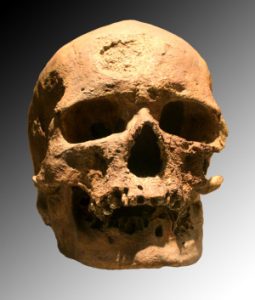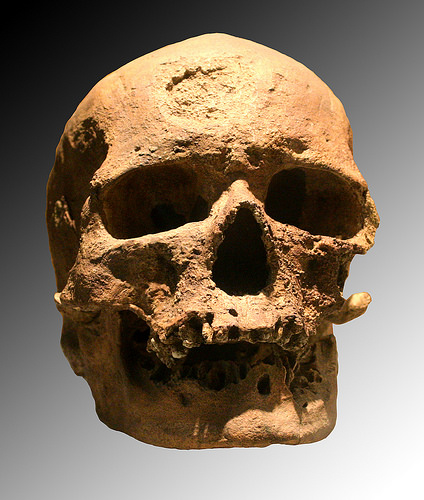
MOLECULAR BIOLOGY AND EVOLUTION (OXFORD UNIVERSITY PRESS)—With recent studies proving that almost everyone has a little bit of Neanderthal DNA in them—-up to 5 percent of the human genome— it’s become clear our ancestors not only had some serious hominid ‘hanky panky’ going on, but with it, a potential downside: the spread of sexually transmitted infections, or STIs.
For wherever life goes, germs are soon to follow.
In the case of the most common STI, human papillomaviruses (HPVs), almost everyone hosts a number of infections, with strain HPV16 responsible for most cervical and oral cancers.
By reconstructing the ancestry and timing of the family tree of HPV16 in greater detail than ever before, and by comparing the evolutionary histories of viruses and humans, a new pattern has emerged. Now, researchers have generated compelling evidence that HPV16 co-diverged with archaic and modern humans—only to be repopulated at a much later date through their contact by Neanderthals, challenging the assumption that HPV16 co-evolved with modern humans. The study, by Ville Pimenoff at the Catalan Institute of Oncology and Ignacio Bravo at the French National Center for Scientific Research was published in the advanced online edition of Molecular Biology and Evolution (DOI: 10.1093/molbev/msw214).
During the evolution of HPV16, variants A and B/C/D co-diverged with archaic and modern humans, respectively. When populations of modern humans left Africa and had sexual intercourse with Neanderthals and Denisovans, they were infected by the viral variant that had evolved with archaic humans, and this virus thrived and expanded among modern humans
This scenario finally explains unsolved questions: why human diversity is largest in Africa, while HPV16 diversity is largest in East-Asia, and why the HPV16A variant is virtually absent in Sub-Saharan Africa while it is by far the most common one in the rest world.
“Oncogenic viruses are very ancient,” said Ignacio Bravo. “The history of humans is also the history of the viruses we carry and we inherit. Our work suggests that some aggressive oncogenic viruses were transmitted by sexual contact from archaic to modern humans.”
They propose that interactions between the host and viral genomes may explain why most humans are exposed to HPVs and cure the infection, while in a few unfortunate cases the infection persists and can lead to cancer. The different degree of archaic ancestry in our genomes could be partly responsible for differential susceptibility to cancer. Since HPVs do not infect bones, current Neanderthal and Denisovan genomes do not contain HPVs. As a next step, the authors hope to trace HPVs sequences in ancient human skin remains as a more direct test of their hypothesis.
________________________________
Cover image: The original “Old man of Cro-Magnon”, Musée de l’Homme, Paris. 120, Wikimedia Commons
________________________________
Source: Oxford University press release
___________________________________________

______________________________________________
Travel and learn with Far Horizons.
____________________________________________
This richly illustrated issue includes the following stories: Recent findings shedding new light on the whereabouts of the remains of Philip of Macedon, father of Alexander the Great; how an archaeologist-sculptor is bringing bones of the dead back to life; archaeologists uncovering town life at the dawn of civilization; an exclusive interview with internationally acclaimed archaeologist James M. Adovasio about what makes the Meadowcroft Rockshelter prominent in the ongoing search for the first Americans; what archaeologists are finding at the site of the ancient city of Gath, the home town of the biblical Philistine giant, Goliath; and how scientists are redrawing the picture of human evolution in Europe. Find it on Amazon.com.








